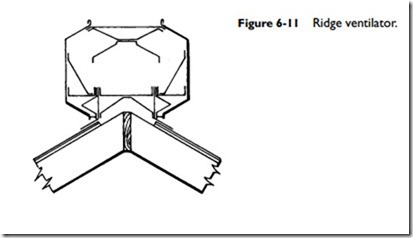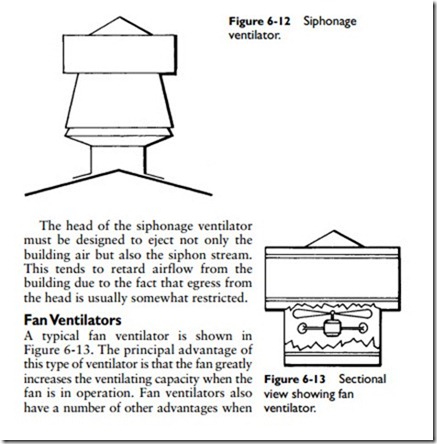Ridge Ventilators
Figure 6-11 shows a sectional view of a ridge ventilator, which is installed along the entire roof ridge of the space to be ventilated. Basically, it consists of a valve in the top of the building, which lets the warm air out as it rises to the roof air outlet distribution along the length of the structure. Then, too, it has a pleasing uniform appearance.
Its major disadvantage is that it does not take full advantage of wind action unless the wind direction is almost directly across it. This type of ventilator also involves a somewhat cumbersome damper and a rather difficult problem in building modernization.
Siphonage Ventilators
The siphonage ventilator (see Figure 6-12) acts by induction, drawing the building air upward. Wind causes a flow of air upward through a duct that is concentric to and parallel with the ventilator shaft extending from the building. Both of these air passages terminate in the ventilator head, and the upward flow of the outside air creates a siphonage action drawing the building airstreams exhausting through the head. This ventilator is simply a stationary unit with an auxiliary air passageway to obtain the siphonage action.
the fan is not in use and have great capacity when the fan is operated. Fan ventilators can be used on any building, regardless of access to wind flow, and can be spotted directly over any point at which ventilation is badly needed. These ventilators can also be used on ductwork flues to give greater capacities when friction losses are relatively large. It should be noted that a fan ventilator is a forced– draft rather than an induced-draft ventilator.

